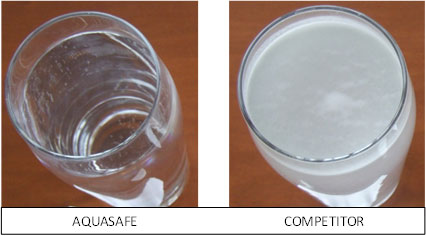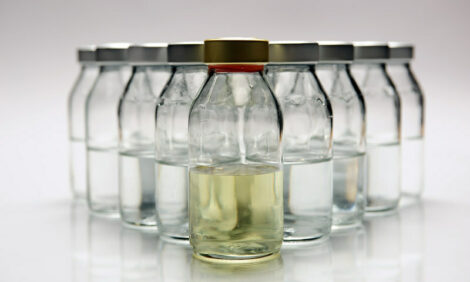



Water, Water Everywhere – But is it Fit to Drink?
UK - Biosecurity makes the difference between profit and loss, but where is it best to invest? Feed mills have invested in biosecurity and now just 1.3 per cent of poultry meals and 1.1 per cent of poultry extrusions testing positive for Salmonella in the UK. However water is still being ignored by too many farms.Of course feed remains a potential source of disease but it is not the only one and any biosecurity programme needs to encompass all sectors of poultry production to be really effective. It is necessary to realise the importance of the intestine of the chicken as part of the immune system. For this the most important component has to be drinking water.
It is not uncommon for biofilms to develop quickly in drinker lines, when just a few bacteria in the water become attached to the walls of the pipe. The bacteria produce a slime which coats the pipe walls, creating the biofilm. This attracts additional bacteria and within a matter of days, the watering system has an active colony of pathogens.
If left untreated portions of the biofilm can break off to clog the drinkers, causing them to leak. The water can also inoculate the birds with whatever bacteria are present.
Parasites can also feed on the slime inside the water lines, which are ingested by the chickens and become internal parasites.
Optivite have for many years been working with poultry farmers to find cost effective, simple solutions to tackle the problems of biosecurity and here we will concentrate on water.
Optivite recommends that cleaning and disinfection of all water lines is undertaken when there is evidence of:
- Sediment (from water supply or treatments)
- Microbial growth
- Dirt (Dust, feathers, etc.)
- Stagnant water
- Biofilm formation
- Animal contamination (faecal, etc.)
- Corrosion (old metal tanks)
Water is the largest volume of anything ingested by a growing animal.
Birds drink 1.6 to 2.0 times as much water as they consume feed and the volume increases with age. Water quality can be very variable with “town” water being chlorinated down to bore-holes, wells and surface water extraction.
Even “town” water can be stored in header tanks to provide the steady pressure required for nipple drinkers, these tanks are often not easily accessible and can become contaminated with dust, insects and even rodents. Contaminated water immediately affects every bird in the flock so the problem is not isolated.
Providing good quality drinking water can decrease the incidence of intestinal diseases like necrotic enteritis and coccidiosis. These diseases are costly to the farmer with experts estimating that necrotic enteritis alone costs the world poultry industry $2 billion annually. Enteropathogens such as Salmonella and Escherichia coli can also survive in water lines and reduce consumer confidence.
When birds are healthy, they are able to use all the nutrients they consume for growth. If they are suffering from infection, they need some of those nutrients to maintain a strong immune system and fight the disease. This has a direct effect on FCR, laying percentage and fertility.
A simple dosing system is required to ensure water quality is never compromised. Not all header tanks and drinker systems are easily accessible so Optivite provides different options to suit farm requirements.
- AQUASAFE, a high quality tablet that is effervescent and dissolves in minutes to treat drinking water safely. The tablets are strong so that they do not crack or flake to ensure that dosing is always accurate. One tablet treats 1000 litres of water and will make it drinkable in 30 minutes without stirring. Importantly there is no sediment when using Aquasafe tablets even in hard water areas.

For really inaccessible tanks Optivite recommend using an auto dosing system which requires no power and is driven by water flow. Such a system is very simple to install. To do this an autodoser is simply installed into the waterline supplying the header tank. If the dilution rate is set at 1:40 then the concentrate uptake tube is placed in a 25 litre container of water to which one tablet of Aquasafe is added.
The 25 litre container contains a water solution of 200ppm chlorine and this is drawn into the water line at a 1 in 40 dilution making the drinking water fully biosecure with 5ppm free chlorine. Using this system the concentrate bottle can be placed at floor level where it is easily seen and can be topped up with water and a single tablet as and when required.
- FLOGENIC - new to the Optivite range is a fully automated system of disposable units that simply attach to the ball valve of header tanks, storage tanks or troughs with each unit treating up to 90,000 litres of water without needing any attention.
This Flogenic unit is proving very popular with all livestock operations due to its inherent simplicity and ease to use.

“Since its launch interest has been excellent as people realise that water can be a carrier of disease,” comments Simon Knowles from Optivite. “Enteropathogenic bacteria such as Escherichia coli, Salmonella or Campylobacter are common in farm water. Other micro-organisms such as the Hepatitis A virus can survive in water for 6 months. Cryptosporidium is a protozoan also capable of surviving months in drinking water. All of these can be controlled with either Aquasafe or our new Flogenic system.”
To meet performance targets and achieve genetic potential investing in a quality drinking water supply is essential. Optivite offers cost effective and safe systems for all livestock and for all installation types.








